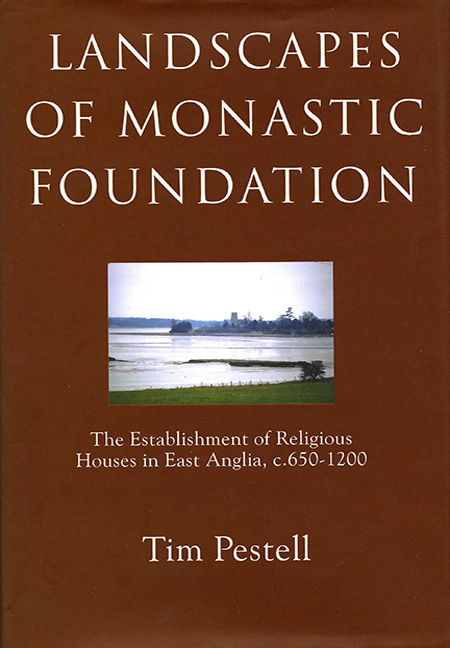Book contents
- Frontmatter
- Contents
- List of illustrations
- Acknowledgements
- Abbreviations
- 1 Introduction: Past and Present Approaches to Monastic Studies
- 2 Monasticism in Middle Anglo-Saxon East Anglia
- 3 The First Viking Age and its Consequences for Monasticism in East Anglia
- 4 Monastic Reform and Religious Life in the Later Anglo-Saxon Period
- 5 The Establishment of Monasteries in the Norman Landscape
- 6 Conclusions
- Bibliography
- Index
4 - Monastic Reform and Religious Life in the Later Anglo-Saxon Period
Published online by Cambridge University Press: 11 May 2017
- Frontmatter
- Contents
- List of illustrations
- Acknowledgements
- Abbreviations
- 1 Introduction: Past and Present Approaches to Monastic Studies
- 2 Monasticism in Middle Anglo-Saxon East Anglia
- 3 The First Viking Age and its Consequences for Monasticism in East Anglia
- 4 Monastic Reform and Religious Life in the Later Anglo-Saxon Period
- 5 The Establishment of Monasteries in the Norman Landscape
- 6 Conclusions
- Bibliography
- Index
Summary
By 1066 a new class of religious institution had not only been established within the Anglo-Saxon landscape, but owned vast tracts of it. Monastic life led according to strict precepts, as exemplified in the Rule of St Benedict of Nursia (c.480–550), was not new to the tenth century: in Bede we find a champion of a strict cenobitic life from an earlier age, railing as he did against ‘false monasteries’ in his letter of 734 to Archbishop Ecgberht. However, the tenth-century monastic reform saw a new approach to religious life, principally through its codification and imposition in a national rather than a regional context. This ‘regularisation’ of communities according to the Benedictine Rule means we may at last speak of ‘monasticism’ in the sense that it was understood after the Norman Conquest (Fig. 21). Equally important in considering the wider ecclesiastical landscape is that those many monasteria which had survived the First Viking Age continued to exist alongside these new monasteries. An added dynamic to the relationship between the patronage of these two types of community was the increasing move towards new proprietary church foundations being made by an emerging thegnly class. This trend was especially strong in East Anglia, giving rise to the exceptional numbers of parish churches the region had by the High Middle Ages. The arrival of Benedictinism in East Anglia therefore requires examination on several levels.
Reform has been a continual theme in religious life but the dramatic burst in activity from the mid-tenth century is largely attributable to the policy of King Edgar (959–75). That this patronage coincided with a period of important political change in the emerging Anglo-Saxon nation state is no coincidence, Edgar's religious concerns need to be scrutinised in the context of secular politics. Although the nominal creation of an English state had been achieved by the house of Wessex under Alfred's son Edward the Elder (899–924) and grandson Æthelstan (924–39), regionalism remained a strong and potent force. When it manifested itself in the reign of Eadwig (955–9), whose kingship was rejected by the Mercians in 957, Edgar was instead chosen to be their king. On Eadwig's death two years later Edgar succeeded his brother as king of all England.
- Type
- Chapter
- Information
- Landscapes of Monastic FoundationThe Establishment of Religious Houses in East Anglia, c.650–1200, pp. 101 - 151Publisher: Boydell & BrewerPrint publication year: 2004



